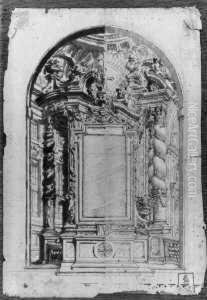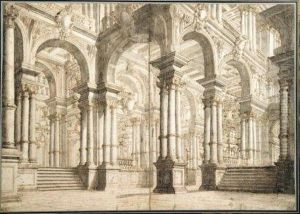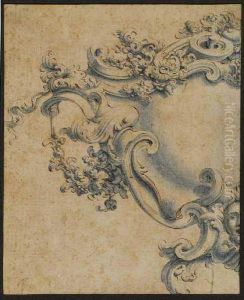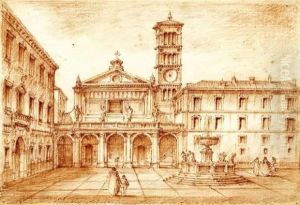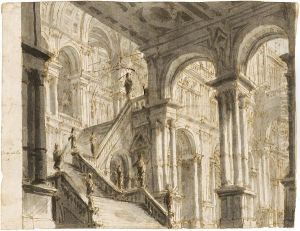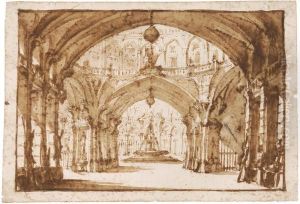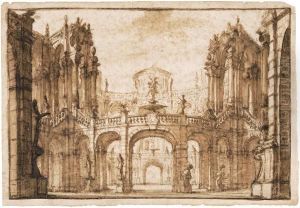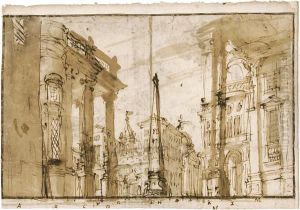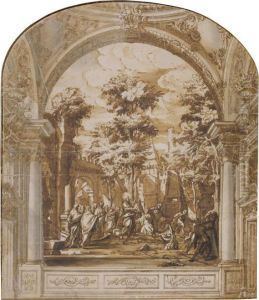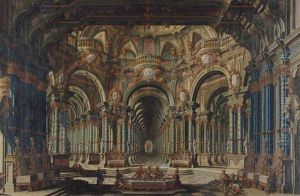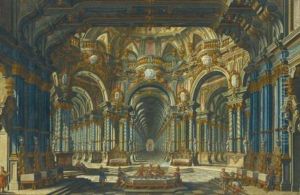Francesco Galli Bibiena Paintings
Francesco Galli Bibiena, born in 1659 in Bologna, Italy, was a prominent member of the Galli da Bibiena family, a dynasty of Italian artists and architects who were influential in the development of theater architecture, stage design, and the Baroque style in the 17th and 18th centuries. Francesco was the son of Giovanni Maria Galli da Bibiena, an architect and painter. Under the guidance of his father, Francesco developed his skills in painting, architecture, and stage design.
Francesco Galli Bibiena became particularly renowned for his work in theater design. He was one of the pioneers in the use of the angled perspective scenery (scenotecnica) which created an illusion of depth on the stage. This innovation had a profound impact on the aesthetics of theater production and was widely adopted in the design of opera houses and theaters throughout Europe.
In addition to his work in theater, Francesco was also a talented architect. He was involved in the design and construction of numerous buildings, including churches and palaces for the European aristocracy, most notably in the German-speaking regions. His architectural style was characterized by elaborate ornamentation and dramatic spatial compositions, typical of the Baroque period.
One of Francesco's most significant contributions was to the development of the 'Bibienesque' style, named after his family, which was marked by grandiose and intricate designs that blended architecture, painting, and sculpture. The style was especially influential in Central Europe, where the Galli Bibiena family worked extensively, particularly in the Habsburg empire.
Francesco Galli Bibiena's work was not only appreciated in his lifetime but also had a lasting influence on the arts. He was a teacher and mentor to several artists and architects, and his designs continued to be studied and admired long after his death in 1739. His legacy is also carried on by the surviving buildings and theater designs that exemplify the rich artistic tradition of the Baroque era.
